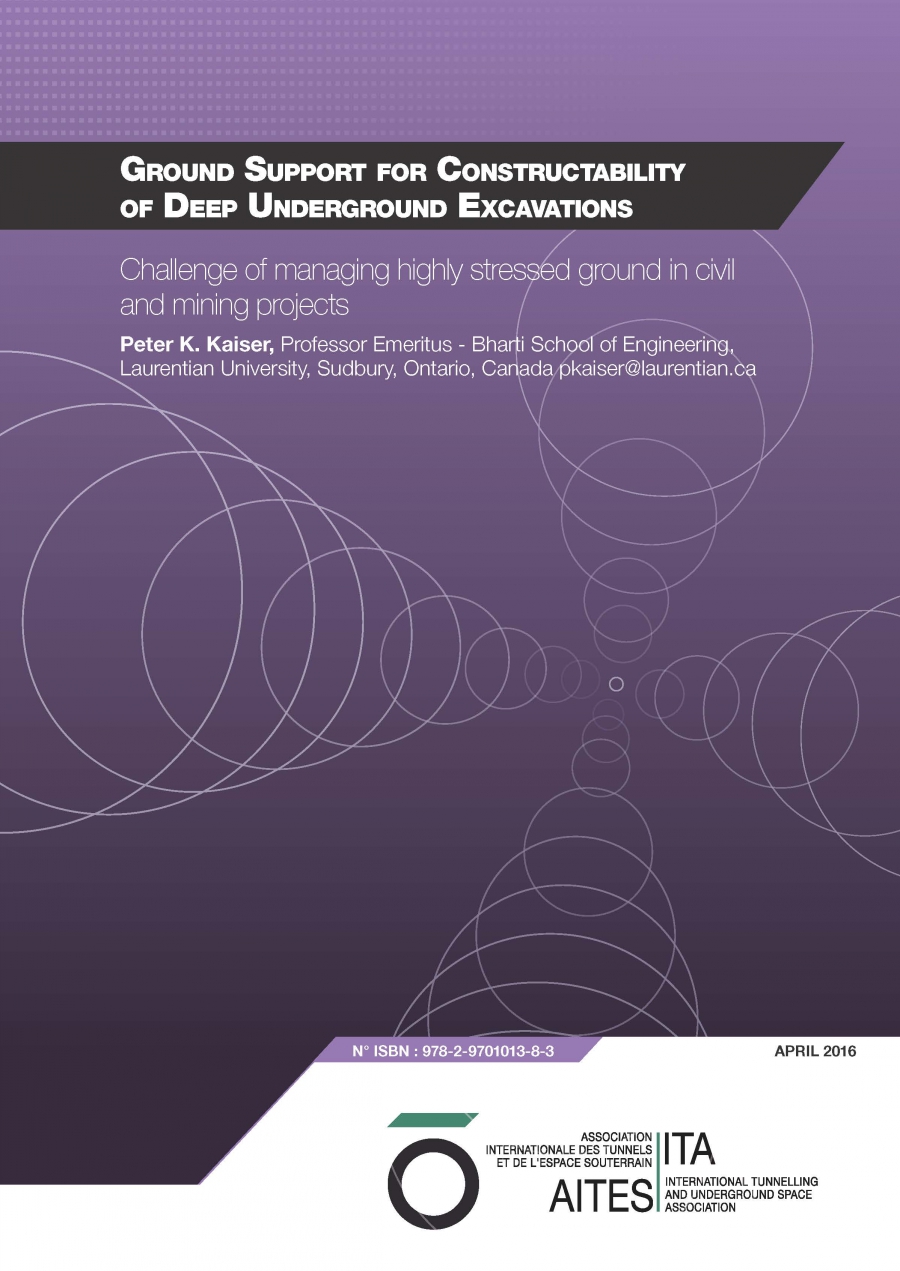For the economic and safe construction of deep tunnels, a contractor has to be presented with efficient and effective ground control measures, i.e., support classes that can be rapidly installed and are effective in managing stress-fractured ground. For this purpose, it is necessary to properly anticipate the rock mass behaviour and then provide flexible but reliable means for the support of a shell of stress-damaged ground around the excavation such that a tunnelling project can proceed without unnecessary delays. Stress-driven rock mass failure in brittle rock in the form of gradual ravelling or sudden strainbursting may often slow the tunnelling progress. Both failure processes impose difficult and hazardous conditions for tunnel construction whether the tunnel is advanced by TBM or drilling and blasting. Robust engineering integrating empirical experience, engineering analysis and sound construction methods provide the key to successful tunnelling and timely project completion. Designs that respect the complexity and variability of the ground, consider the practicality and efficiency of construction, and ensure the effectiveness of ground control measures, lead to fewer project interruptions and, consequently, fewer claims or cost overruns. Robust engineering in highly stressed, brittle failing rock means to design for rock mass degradation and to ensure that all construction tools work well with broken rock. Some challenges to overcome for economic constructability are engineering design aspects that matter for the selection of the most appropriate excavation technique and the most efficient and effective support systems. This article discusses both fundamental and practical means to better understand and properly document (e.g., in tender documents) the anticipated rock mass and excavation behaviour; better qualify relevant rock mass characteristics and their variability; adopt representative models and inputs to capture the actual rock mass behaviour; and account for practical constraints during construction (i.e., by matching a design to a chosen construction technique). These elements of excavation design are discussed and the impact of naturally variable conditions is reviewed. Guidance is provided for the quantification of anticipated rock mass behaviour near excavations and for the selection of design inputs to arrive at ground control measures that provide both safe and efficient construction. It is discussed how stress-fractured ground is prone to ravelling and how it imposes large deformations due to rock mass bulking. It is concluded that deformation-based support selection principles are most suitable for conditions with stress-fractured ground. Guidance is also provided to arrive at support systems that are suitable for highly stressed tunnels in brittle rock for civil construction and mining operations. The primary conclusions highlight the need for improvements in better anticipating the rock mass behaviour at the tender stage and the need to design ground control measures from a perspective of practicality rather than theoretical analysis. Specifically, with respect to excavation stability assessment, it is necessary to anticipate brittle failure processes and to properly describe the implications of shallow rock mass damage and bulking of stress-fractured ground (e.g., stand-up time reductions). With respect to support selection, conventional support design approaches, based on standard rock mass rating systems, are severely limited in conditions where stress-driven failure processes dominate. They do not provide effective support systems for stress-fractured ground, because they do not account for mining-induced stresses, stress changes and related deformations. For tunnelling and mining at depth, it is necessary to select support systems that are effective in controlling the bulking of broken rock and able to yield when strained by deformations imposed by the stress-fractured ground. This can be achieved by following the deformation-based approach described in this article. Since rock mass bulking can impose excessive deformations that cannot be estimated by standard numerical models, it is necessary to separately estimate the deformation demand when bulking dominates (e.g., in late stage mining). With respect to constructability, it is concluded that conditions of brittle failure must be anticipated early and thus well described in a quantitative manner in tender documents. This should include design inputs relevant for estimating stress-fracturing, for anticipating the extent of rock mass degradation and its impact on stand-up time. Most importantly, flexible and effective support systems (classes) must be provided to manage rapidly changing ground conditions and prevent related delays.
